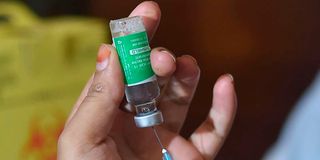Explainer: Where Cuba's Abdala vaccine got its name

It is not clear how many of the 300,000 civil servants are vaccinated.
A new Covid-19 vaccine has become the talk of the town, not just because of the vaccine’s effectiveness but because of its unique name.
The Cuban government recently introduced the three-shot Abdala vaccine, which has a reported efficacy of 92.28 per cent against the disease.
And although the vaccine is yet to get approval from the World Health Organization (WHO) so as to be exported and used outside Cuba, the subject has already gained popularity.
On social media, netizens had a mouthful to say.
“Finally, an alternative for Johnson & Johnson vaccine. It's Abdala & Abdala,” said @adham.
“I thought Abdala vaccine is only a meme,” tweeted @Sarah_Safian.
“We now have the Abdala vaccine from Cuba. We may also need an Eric vaccine,” said @EricBana.
What's in a name
But what many do not know is that the name Abdala has sentimental meaning for Cubans. According to a report by US-based CNN, Abdala is the name of a poem penned by Cuban revolutionary icon Jose Marti.
Biography.com describes Marti as a man who had great influence on the Cuban revolution. In 1895, he took part in the fight for Cuba's independence from Spain but unfortunately died on the battlefield.
He is also famous for his artistic talents in writing poems, including the dramatic "Abdala", in which he describes the liberation of an imaginary country.
The popular song “Guantanamera”, recorded by American musician Pete Seeger, is adapted from his poetry collection Versos Sencillos.
Like most revolutionaries fighting for the freedom of their countries, Marti had many run-ins with law enforcers, resulting in his arrest and deportation to Spain.
However, when the 10-year-war ended in 1898 he returned to Cuba. His desire was to fight for equal rights for the people of Cuba and prevent any one class or group from taking control of the country.
Martí is considered a national hero in Cuba and is honoured by a memorial statue in the Plaza de la Revolución in Havana as well as the international airport there that bears his name.





